5 Unconventional Benefits Your Startup Will Get From a Hackathon

Though hackathons bear an image of free pizzas and midnight-coding sessions under mild alcohol stimulus, I’ve realized there’s much more to it. Besides the college fraternity-like narratives one might imagine, such events actually uncover value for your engineering team and the entire company that can only be realized in hindsight. Here are some of the subtle benefits I’ve noticed:
Giving The Stage To Engineers
As startups grow and product-market fit is achieved, a startup tends to refocus its efforts from experimentation to acceleration. Once the startup has figured out a “machine” that turns one dollar into two dollars, growth efforts will gradually supersede product development priority. A byproduct of this shift is a change in momentum between departments in the organization. Your once-upon-a-time glorious engineering team which built that amazing product that users love so much, gives way to usher in the exploding sales department, marketing budgets and customer support teams. A hackathon serves everyone as a warm reminder that your company has engineering grassroots. It’s an ego booster for your developers. Yes — ego is unwelcome and frowned upon in our daily work, but it’s only humane to seek praise, and this is a great opportunity to honor your engineers the appreciation they deserve.
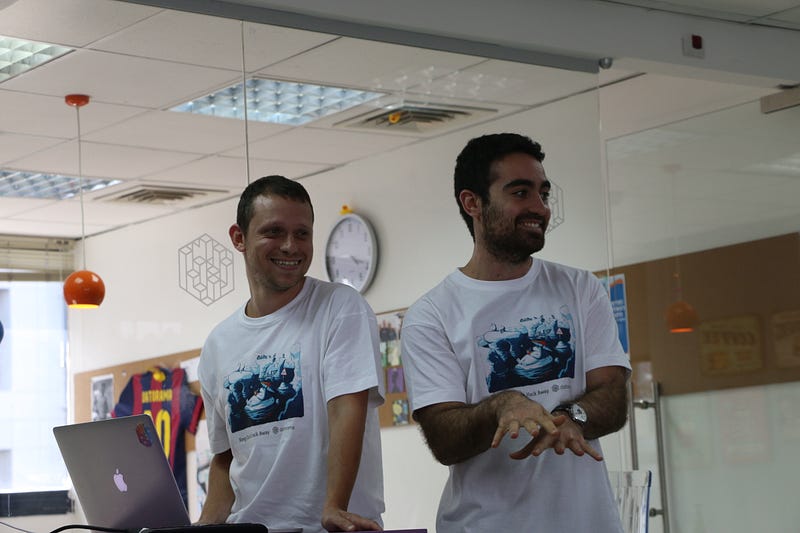
As an engineer, there’s a sweet feeling of satisfaction you get from walking through the office the week after a hackathon. For a brief moment you’ll feel an imaginary halo floating above your head as you’ll hear everyone talk about that amazing prototype you just hacked up last week and how it could impact the company.
Everyone Becomes a Product Manager
Hackathon days will prompt all participating teams to put on their PM hats. Given a stress-free environment, unbound to sprint cycles or pressure to deliver, we’ve had a great opportunity to not only implement features, but to actually conceive, design, spec and prototype them. I found it quite impressive to witness teams emerge with ideas that look as if they were crafted by a product manger. The team that came in 3rd place was a great example as they prototyped a long yearned-for step in the Datorama onboarding user experience: recommended sample widgets. As you load new data into your Datorama account, the platform employs a machine learning algorithm that offers recommended widgets based on statistical analysis of the user’s account behavior.
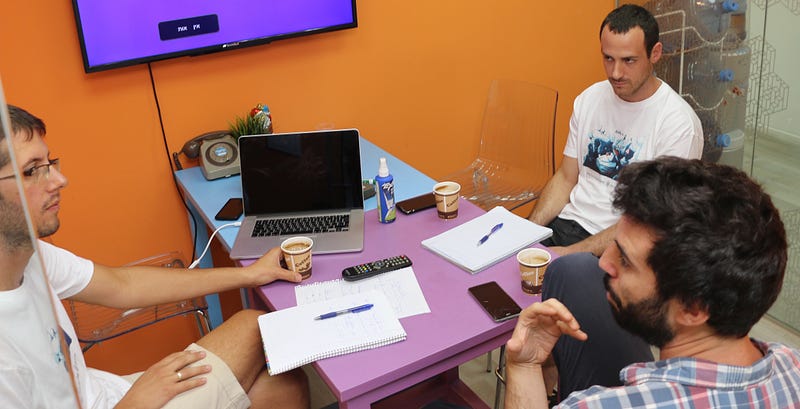
Tapping Technical Pedigree For Innovation
Some problems might come as impossible to solve. They’d require technical innovation, which only tech-savvy engineers possess, thus they’d be the only ones in the organization who could imagine a solution. Or so the saying goes:
“If you can imagine it, you can achieve’ it” — William Arthur Ward
What’s nice about this is that innovation has a ripple effect across the organization. When people in non-engineering departments comprehend what’s really possible technically, they start imagining new features themselves and the idea floodgates open. In a worldwide company, sharing slides and live-broadcasting the hackathon demos can bridge the gap for sales, marketing and biz-dev departments who aren’t co-located with the engineering workforce. The former experience customer pain and core business problems on a daily basis, yet they often don’t realize some of these problems can be tackled with the latter’s technical expertise.
Our Hackathon’s 1st place winners Noga and Ilya demonstrated impressive innovation by hooking up Datorama’s platform with the Amazon Echo to achieve speech driven marketing insights and actions. I hold much appreciation for powerful persuasion skills possessed by salespeople, which engineers too often lack of. However I doubt that such a powerful sales tool as integrating Amazon Echo could be conceived by even the most seasoned salesperson. This innovative project has a wow effect that could resonate with prospects and help salespeople close deals.
The icing on the cake: Ilya is our QA team leader and Noga is a 2nd tier support engineer, which goes to show the innovation ripple effect permeating into the organization’s different roles and departments.
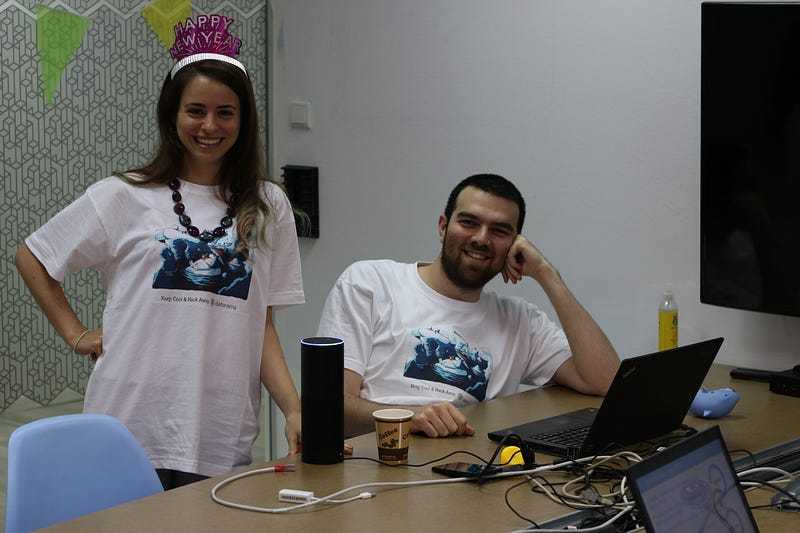
Work On Your Own Problems
Like startups, some hackathon teams may come up with projects that aim to solve a personal pain. Paul Graham of Y-Combinator has written extensively on startup ideas, specifically about innovating on problems you have yourself. In a nutshell, the reasoning for working on such problems is that:
- It validates the problem exists. Other engineers probably suffer from it just as you do.
- People find more passion in working on something they direly need themselves.
Our 2nd place winners did just that. They developed an internal event monitoring system that solved the pain of debugging Datorama’s data streams in a structural manner, accompanied by a timeline dashboard that visualizes the sequence of events.
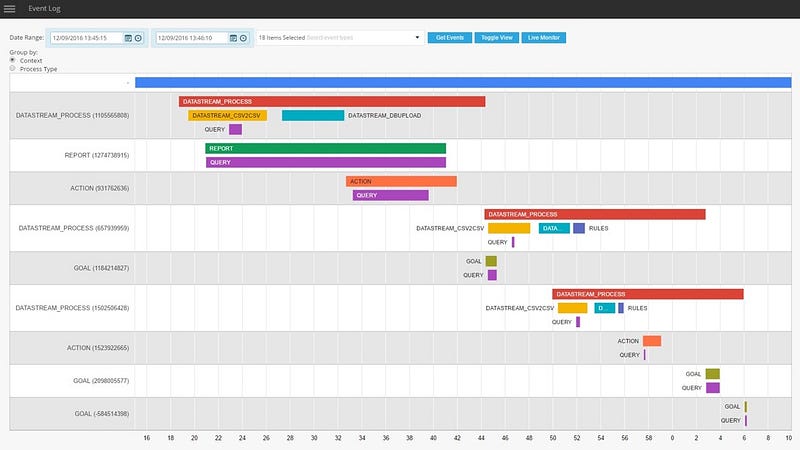
The beauty of working on your own problems is that they’re often interconnected with related business problems. The new monitoring system increases our ability to analyze failures and downtime, thus improving our customer support and turnaround times. Now we have a magical dashboard that visualizes the ETL process of each data stream. This has enabled us to backtrace the source of errors in a matter of minutes instead of hours. Besides mitigating our pain around error analysis, this eventually translates into happier customers and reduced support overhead — a big business win.
Personal Growth Investment
A hackathon gives engineers the freedom to work on whatever they want, but it also requires them to present it in a serious manner and champion their ideas for the company to adopt. This pushes us engineers away from our comfort zones (read: our geeky multi-screen desk and headphones). It forces us to assemble a sexy slide deck, figure out a pitch, and prepare for questions from the spectators. It stimulates our brain’s right hemisphere, which is comfortably numb in the regular daily coding work. For some of the engineering workforce, this might be the first time they get to present in front of a large audience. I believe these aspects of a hackathon are just as important as the actual hacking because they strengthen our weaknesses and help us build self confidence.
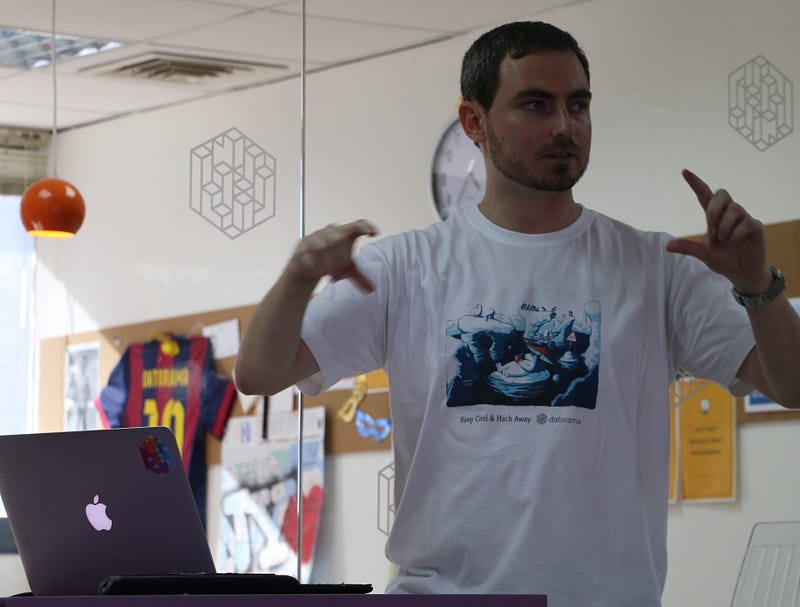
Datorama’s 3-day hackathon was concluded with an hour’s sprint of nine demos, each spanning 5-minutes and another 1–2 minutes for Q&A. A successful demo may only be the prelude for more personal growth. If your project gains traction you can find yourself building your “personal brand” further by:
- Open sourcing its code and building a community around it.
- Giving the same demo talk to bigger audiences in the company.
- Presenting it in a relevant meetup or conference.
Bonus: Attracting Talent
It is no news that a vibrant engineering culture is a leading factor in talent acquisition and retention. For this reason, many companies blog about their culture, and some even shout it out loud on their website. Hackathons are a core component of such a culture — they give software engineers an opportunity to do what they love most — to build software, their way. This sends the market a message that this company is worth working for, and builds committed engineers. And — here comes the meta — you get to blog about it afterwards 🙂
Shameless plug: on that note, we’re hiring world class engineers to join our team. We’re solving today’s most difficult problem in the marketing analytics world — integrating all of your data sources together into one unified reporting platform. Our stack includes Java, Scala, Spark, PostgreSQL, Redis, Angular 2, the whole AWS shebang and lots more cutting edge goodies. We also know how to enjoy work — drop by our offices and join us for a game of table tennis, a tech talk, or a weekly happy hour. If this tickles your senses, check out our careers page, or feel free to reach out to me directly on Twitter.
